Silkie Chicken – 4 Must Do Special Care Tips
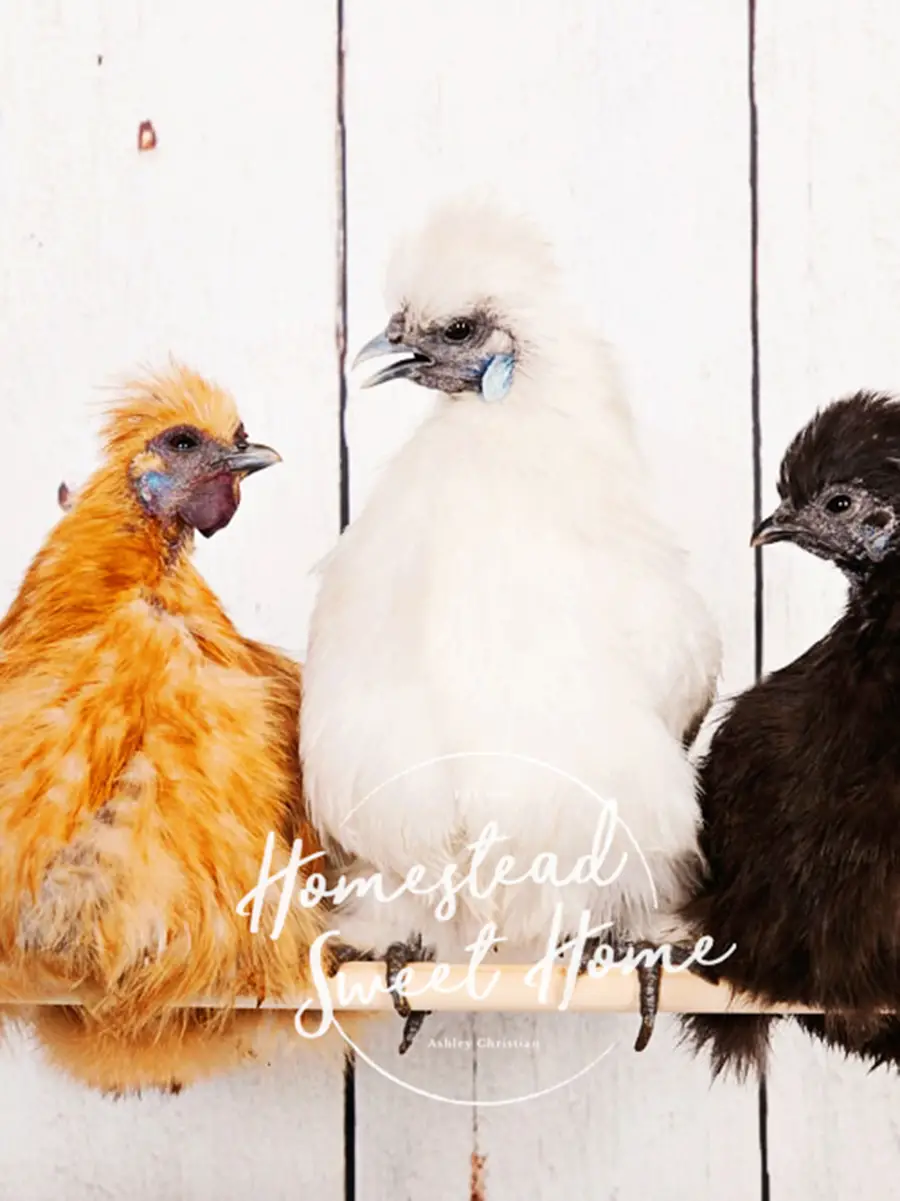
Silkie Chicken Quick Facts
- Known for: puffy hair-like feathers, being excellent mothers, and very friendly personalities
- Temperament: very friendly
- Eggs: 100 small cream-colored eggs each year
- Meat: poor—reaches maturity at 19 weeks with 2.5lb males and 2lb females
- Climate: Excellent cold tolerance and good heat tolerance
- Broodiness: perhaps the most broody of any chicken breed
Silkie Chicken Overview
The Silkie chicken is known for its puffy hair-like feathers, hens making excellent mothers, and their very friendly personalities. Silkies have a calm temperament and are not aggressive towards humans or other animals. They are cold hardy so they can be raised in colder climates than other breeds of chickens. Silkies will lay 100 small cream-colored eggs each year because of their small size. The meat is also not that desirable which means Silkies should mainly be kept for the benefits they provide rather than profit margins. Silkies are perhaps the most broody of any breed; if you want your hens to sit on eggs of any breed, then these would make a good choice for you.
Pros and Cons of Silkies
- Pros: Excellent mother, wonderful personalities and make great pets, unique appearance, their smalls size, and personality means they will handle confinement well, and weather hardy
- Cons: Not good for egg or meat production
Silkie Appearance
- Size: Very small Bantam sized birds 2lb females and 2.5lb males
- Color: Puffy white, blue, black, buff, grey, lavender, splash, or partridge
- Egg Color: Silkie eggs are cream to light brown in color.
The name “Silkie” comes from the silk-like appearance of the birds’ feathers. Their feathers lack barbicels, the hook-like barbs that other chicken breeds have and which keep their feather sections together, giving them their distinctive look. This lack of barbicels is what gives Silkies their silky feel.
Silkie chickens have some other unique features, such as their dark blue skin, meat, and bones. They also have blue earlobes. And while most chicken breeds have four toes, the Silkie has five. They also have feathers covering their legs and a large crest of feathers on top of their heads.
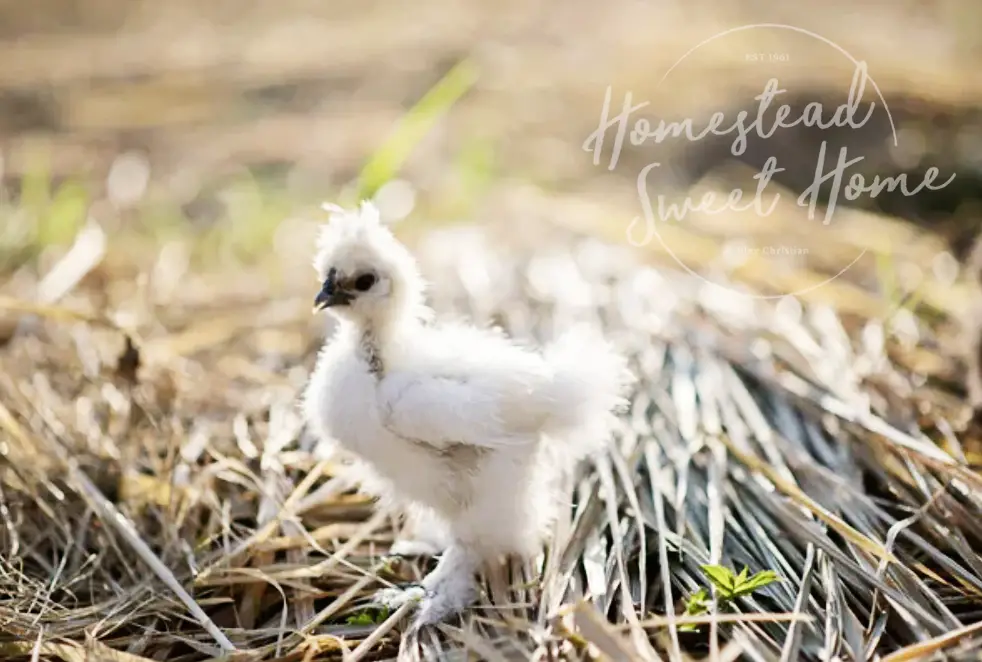
Silkie Egg Production
Silkies are not prolific egg layers and will lay somewhere around 100 eggs per year. Their eggs size ranges from small to medium and are a cream to light brown color. Hens will reach full maturity at 19 weeks, and they should start laying shortly after. To keep your birds healthy and productive, keep their coop and run clean. You can also give them a separate bowl of oyster shells or crushed eggshells to consume as desired. These supplements will provide the extra calcium they require to lay eggs as well as possible.
Silkie Meat Production
The Silkie is not a breed that most people would choose as a dual-purpose or meat bird because they are so tiny, but they are prized in Asia. Because the skin and meat are black, they are rarely offered for sale as food, because their black meat scares some people. And some people feel they are simply too cute to eat.
They can be eaten, but the meat tastes a little stronger than other breeds of chicken. They are also thought to be medicinal in Asian cultures.
The black Silkie chicken is said to strengthen the immune system, according to Chinese medicine. According to Modern Farmer, the broth from silkie chickens can aid in increasing female fertility, improving a pregnant woman’s baby’s nutrition, and restoring energy for women after childbirth.
Silkie Broodiness
Silkie hens have a strong tendency to go broody, and they make excellent mothers. Silkies can sit on eggs of any breed and be good mothers. Silkie chickens are one of the only breeds that will set with duck or goose eggs as well as chicken eggs.
Silkies can go broody several times per year for twenty-one days at a time. They will stop laying while they are brooding. Part of the reason Silkies are not good egg layers is that they go broody so often. If you don’t want your silkies broody, it’s best to collect their eggs every day so they don’t collect a clutch of eggs to sit on.
Some have opted to keep a separate small flock of Silkies as organic incubators to hatch for a flock of a different breed because they are such exceptional mothers. A broody silkie will not even move for predators in the coop when all her coop mates run away. Silkies are so devoted to their eggs that they will not even move for people. Silkie chickens are bred for this personality trait, and it is very difficult to find a Silkie that will not brood.
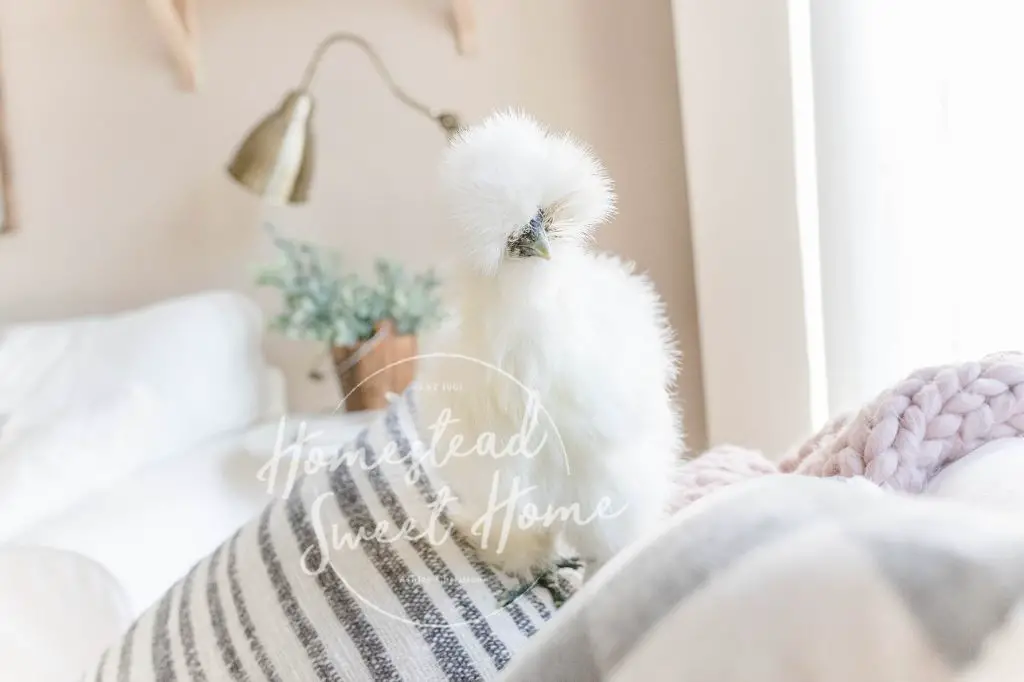
Silkie Temperament
Silkie hens are very calm and docile, often compared to a dog because of their ability to follow their owner around and they make excellent pets. They have such distinct personalities. They’re quite amiable, and some of them are even snuggly! Even if the silkie isn’t cuddly, they are very calm. They are pleasant and laid-back, but due to their smaller size, they can be harassed by others.
Silkies are fantastic pets, and they would make wonderful children’s companions! They’re little fluffy chickens that no kid can resist. If you provide them with human contact on a daily basis, they are quite friendly and love attention!
Even after maturity, roosters are very calm. They care for the hens well, maintain excellent guard duty, and are sweet when caught and held just like the hens.
Silkie Noise Level
Silkie chickens are exceptionally quiet. Even when laying their sound is soft and quiet. If you are tight on space, you could even successfully keep a Silkie in an apartment with a small yard and litter box, if your apartment allowed it. The hens are very quiet, but the roosters will still crow of course. Even the Silkie rooster crow is quieter than other breeds.
Silkie Care
- Silkie will need some special care because of their feathers. They don’t stay tightly woven together as other breeds do, so it rains they are more likely to get soaked rather than the water running off their feathers the way it does with other breeds. Because of their difficulty with rain, it’s important to make sure their coop is weatherproof to keep them dry and warm.
- Because of the long feathers on their feet and extra toe, Silkies can be susceptible to foot problems. Their long feathers can easily get matted and collected with mud and feces, making them prone to infection. To avoid this, you’ll need to trim the foot feathers of your Silkie chickens about once every other month, or as needed. Silkie’s nails can also grow too long if they don’t have a good space to scratch and shorten them. If this is the case, you’ll also need to clip your silkies toes about 25% of their length.
- Another problem some Silkies can have is not being able to see when the feathered crest on top of their head grows to cover their eyes. If this is the case with your silkie, you can occasionally trim the feathers around their eyes with pet grooming scissors.
- Additionally, because Silkies go broody so often, and are very stubborn about it, you’ll need to monitor their health when broody. Make sure they remain undisturbed when broody by moving their clutch and nesting box to a different spot in the coop, or a separate coop space altogether. You can also offer them food and water close by their brooding spot. Finally, if you need to break up their broodiness, be sure to collect their eggs daily.
Wet Silkie Chicken:
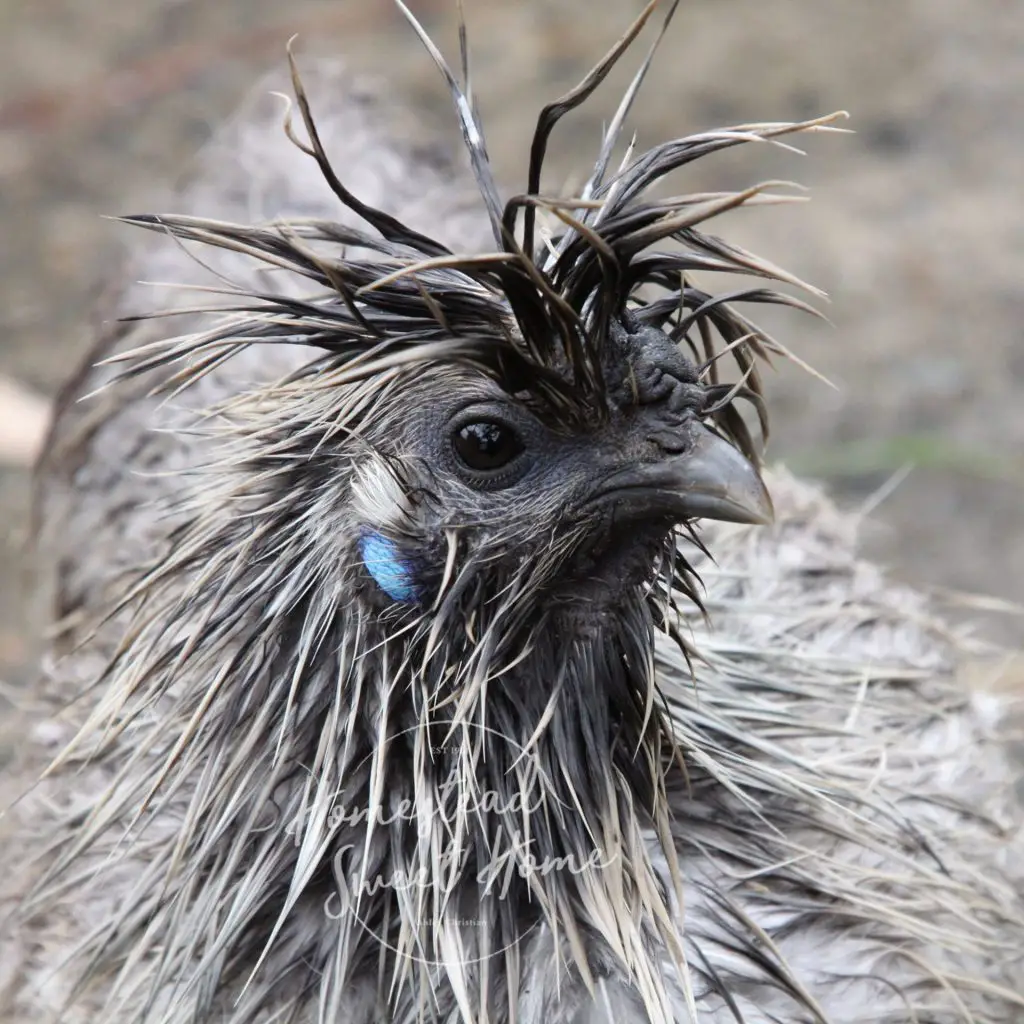
To learn more about how to take care of your Silkie chickens, read our Ultimate Guide to Taking Care of Chickens.
Silkie Housing
Silkies will need four square feet each inside their coop, and eight square feet in their run. Because silkies cannot fly, they will need some extra considerations when setting up their coop, nesting boxes, and run.
Because Silkies don’t fly, they don’t much care for roosting at night, and instead prefer to nestle together on the floor of their coop to sleep. To make sure that pest and varments don’t bother them at night, it may help to build a raised platform a few inches off the ground for them to sleep on, instead of building a roost. It’s also important to make sure their coop will not let in any water when it rains since it will soak the Silkie’s feathers rather than runoff.
Silkie nesting boxes will also need to be low where they can easily reach them without flying. You can make these on the ground level, or a few inches higher. Even though Silkies do enjoy free-ranging because they cannot fly they are easy targets for predators. In general, it’s best to keep Silkies in an enclosed run or a chicken tractor to help protect them from predators unless you have a skilled livestock guardian dog, donkey, or alpaca.
Feeding Silkies
Since Silkies are so small they will go through less feed, around 4 ounces per chicken each day. Once they have reached maturity, you can use a standard 16% layer feed with your Silkies.
You may give your Silkies as much free-roaming space to eat plants and bugs as you can safely provide them. They’ll also enjoy kitchen scraps (though there are some that are harmful, so avoid avocados, dried beans, junk or rotten food, green potato skins, citrus, onions, or tomato or potato leaves from the garden.) Giving them this variety will not only help you save money on food but will also keep your Silkies healthy and entertained.
Offering Silkies grit is important for their health. Since chickens don’t have teeth, they need fine gravel or coarse sand in their gizzards to digest their food. Free-range chickens can usually naturally find this, but if your silkies don’t have access to pebbles, sand, or fine gravel, you’ll want to offer some supplemental grit.
Chicken scratch is also an important supplement to offer to Silkies who are confined to a run or small space. Scratch is a mixture of whole grains that stimulates peaking and scratching behaviors which are soothing to chickens.
Chicken Treats: You don’t HAVE to give your fowl treats, but it’s a lot of fun! Mealworm and black soldier fly larva treats are excellent snacks for chickens that you can get from the feed store. We’ve even created our own basic mealworm farm in pine shavings before!
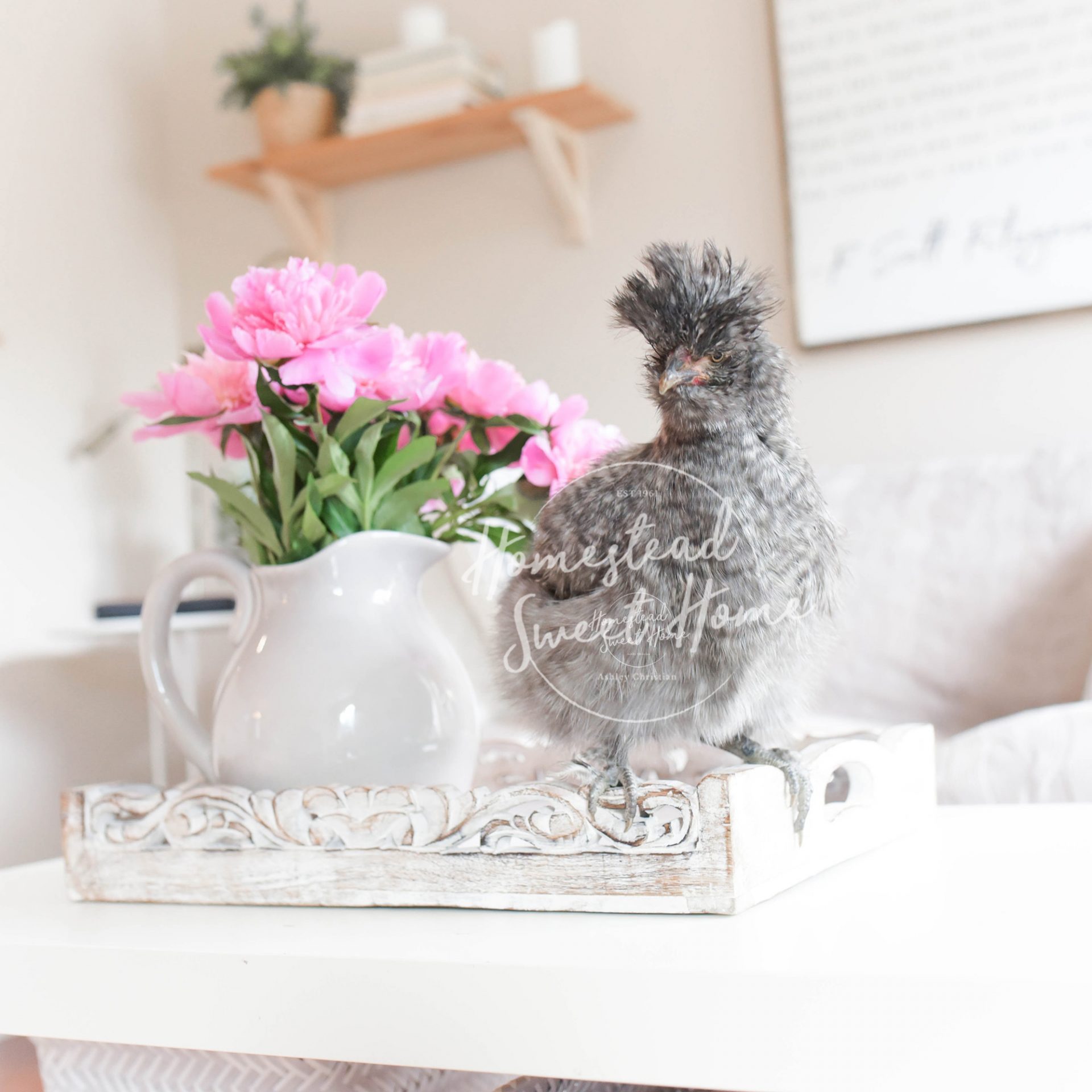
What is it like to own a Silkie?
Silkie chickens are beloved by their owners, but they may not be right for everyone. They are not the most cost-effective breed because of their small size, slow growth, and lower egg production. But if you’re looking for a broody mother hen, you can’t find one better than a Silkie. If you’re tight on space, Silkies would be an ideal choice for you as well. Or if you’re looking for the sweetest personality and adorable features for a pet chicken, the Silkie is our top pick.
Silkies are very friendly, docile chickens that have the personality of a lap dog. Silkies love being held and petted. They are gentle with children and adults alike. Silkies are not aggressive towards other chickens or humans. Silkie hens make excellent mothers who lay 100 small white eggs each year. Silkie roosters are also very sweet and calm.
Silkie Breed History
Silkies are a unique breed of chicken, thought to have originated in China or Southeast Asia. Silkie chickens received their name from the satin-like sheen of their feathers which feel like silk to the touch. Silkies were admitted into the Standard of Perfection in 1874.
The first written record of Silkies comes from Marco Polo’s accounts of his trips to Asia in the 13th century, in which he describes chickens with fur-like plumage black skin.
Summary
Silkie chickens are known for their puffy hair-like feathers, excellent mothers, and very friendly personalities. Silkies also have good weather tolerance and they brood quite easily. However, meat production is poor so Silkies may not be right for you if you raise them primarily meat. Their egg production is also lower, but they make excellent backyard chicken and pets because of their calm, quiet demeanor, and small size.

Leave a Reply